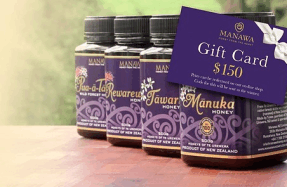THE WAR AGAINST INFECTION: SUPERBUGS V SUPER DRUGS

When the headaches, cold sweats and the shakes started, Miranda Milne hoped she wasn’t coming down with the flu. Hours later, when her temperature spiked at 40°C, her blood pressure plummeted to 79/59 and her kidneys began to shut down, she probably wished she had been. Milne was not battling a virus, but a life-threatening immune response to infection – what doctors call sepsis. As she was wheeled into Tauranga Hospital’s intensive care unit in April 2014, the sepsis was winning.
A minor gynaecological procedure at a private hospital earlier that week had allowed the usually harmless enterococcus bacteria to migrate from her reproductive tract into her bloodstream and wreak almost fatal damage on her body. This had put her immune system into high gear, triggering a cascade of chemical messengers demanding the body respond.

The first cells to arrive at the front-lines are neutrophils, which kill the invaders by eating them – almost literally. When the neutrophils are overwhelmed, as they were for the first couple of days in Milne’s case, the body rushes more and more of them to the battleground. But these troops become less discriminating about what they kill. Not only is the bacteria targeted, but healthy tissue comes under “friendly fire”. The body now has two foes: the bacteria’s toxins and its own immune system. Damage is being inflicted on multiple organs in numerous ways.
Milne’s inflamed blood vessels were leaking fluid into her tissues, causing her blood volume to drop dangerously. To “fill the tank”, doctors had to pump her with intravenous fluids, causing visible bloating as the excess seeped into her tissues through leaky capillaries. At the same time, her limbs were visibly and rapidly wasting as her immune system broke down her muscles to release the sugars and amino acids that enable the liver to make new proteins to fight infection.
“Pretty much everything was deteriorating: her heartbeat, her respiration, her oxygen saturation levels,” says Milne’s husband, Alex Wheatley. “I had to shake her and say, ‘Take a few deep breaths – your oxygen levels are getting too low.’ She was starting to go into organ failure. Once you see the monitors, it’s pretty obvious when you’re in a downward spiral and if you don’t arrest that downward spiral, there’s only one outcome.”
But Milne was lucky. Doctors say her treatment was a textbook example of prompt and effective – and lifesaving – care. About 25% of people who contract sepsis will die from it. Official figures under-represent the reality, because of the way infection-related deaths are coded by the Ministry of Health. If you died of meningococcal disease, for example, you’d have sepsis, but your death would be recorded as the result of meningitis. Infectious diseases experts say that means sepsis isn’t given the recognition it deserves as a significant public health issue – and that inaction, together with the inexorable rise of antibiotic resistance – is costing lives.
In many cases, delayed recognition of sepsis is fatal. Milne was only hours away from being “past the point of no return”, says Tauranga
You’re reading a preview, subscribe to read more.
Start your free 30 days





